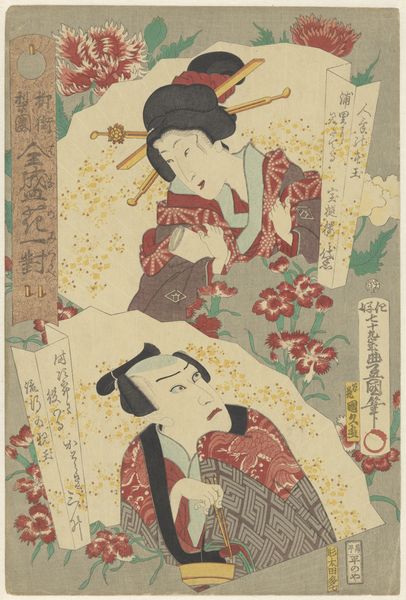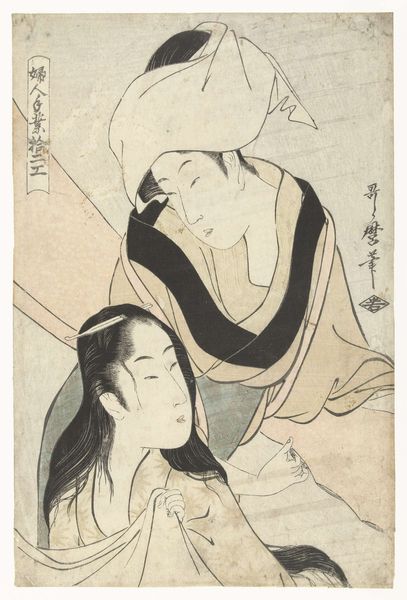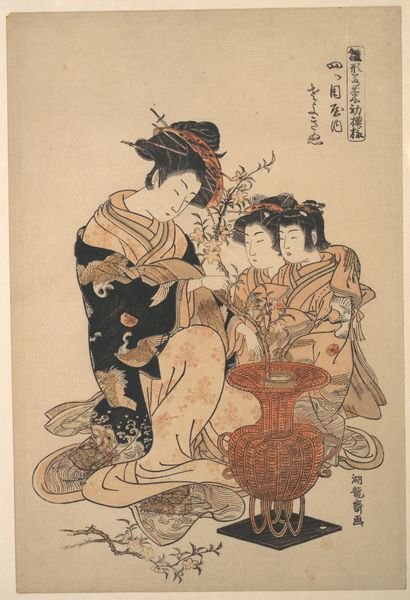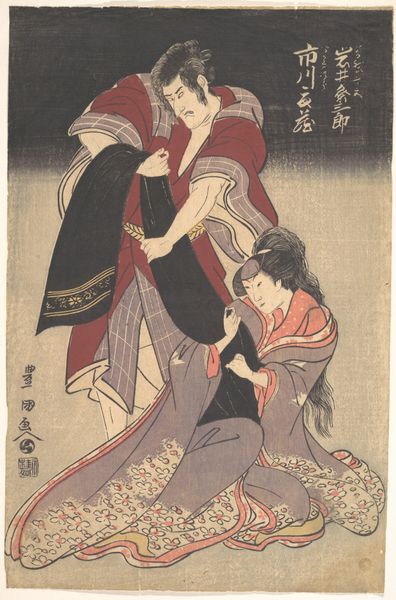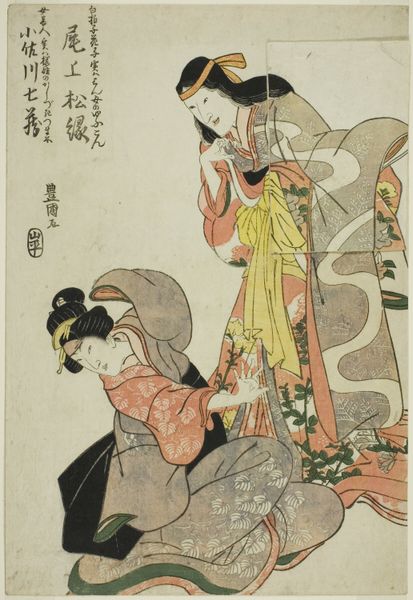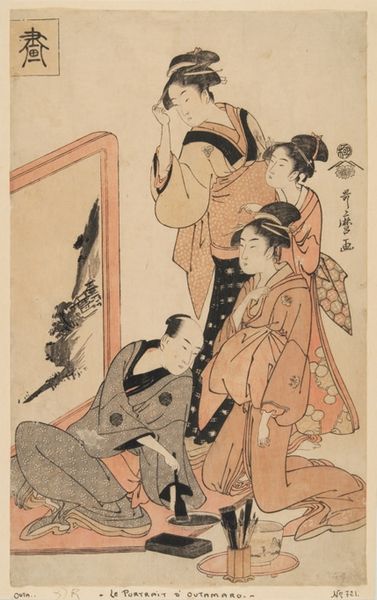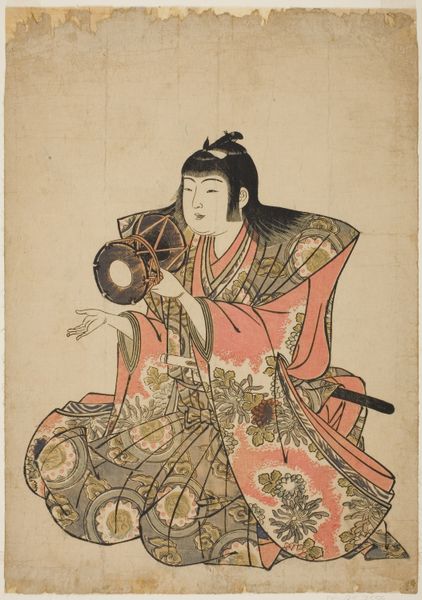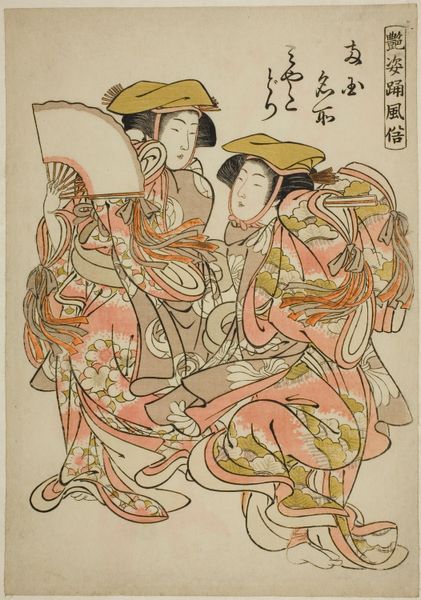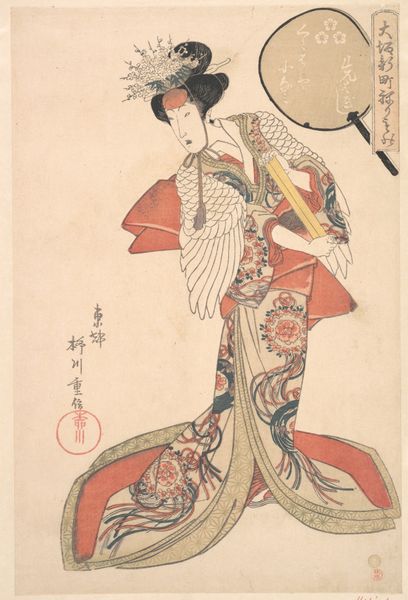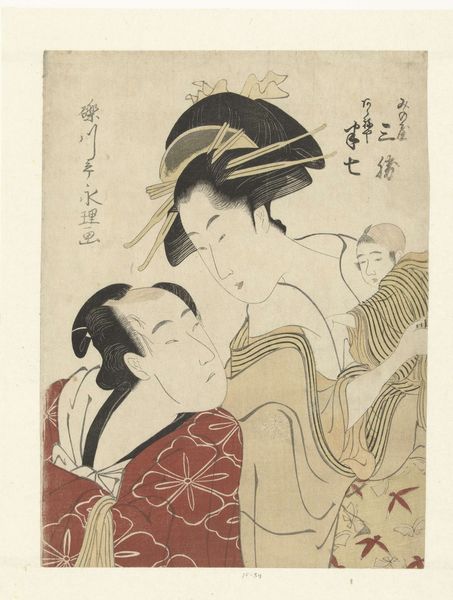
The actors Ichikawa Komazo III as Akuhachiro Tokikage and Nakayama Tomisaburo I as Yushide, the sister of Rokurozaemon, in the play "Hana to Mimasu Yoshino no Miyuki," performed at the Nakamura Theater in the eleventh month, 1798 1798
0:00
0:00
# print
#
asian-art
#
ukiyo-e
Dimensions: 38 × 25.6 cm (14 15/16 × 10 1/16 in.)
Copyright: Public Domain
Curator: Good morning. Today we are looking at a print by Utagawa Toyokuni I, crafted in 1798. It depicts the actors Ichikawa Komazo III and Nakayama Tomisaburo I in the play "Hana to Mimasu Yoshino no Miyuki," a performance at the Nakamura Theater. Editor: My immediate reaction is one of constrained drama. There's an intensity in the man's face, and a stillness in the woman's stance, creating a sense of barely contained emotion within a formalized composition. Curator: Precisely. The print highlights kabuki theatre and its star actors, who became icons. The choice to freeze a moment from a play underscores the public role of art, reflecting and shaping popular culture. These actors were tastemakers, and this image immortalizes their performances. Editor: Let's delve deeper into the formalism here. The meticulous lines, the stylized patterns of their robes—particularly those repeating geometric shapes—the positioning of the figures, how each element contributes to a constructed reality, a symbolic representation of a story rather than mere documentation. The contrasting diagonals emphasize their relationship. Curator: And those costumes! Beyond their aesthetic appeal, they signified status, character, and allegiance within the play. Each color, pattern, and embellishment held specific meanings recognizable to the audience of the time. The image becomes a key to unlocking a lost cultural language. It illustrates the extravagance and symbolic layering characteristic of kabuki theater. Editor: I appreciate how Toyokuni used the flatness of the print medium to emphasize surface pattern and design. There's little attempt at creating depth, forcing us to engage with the artifice, the construction of the scene. Curator: Absolutely. The Ukiyo-e tradition wasn't just about pretty pictures, but rather reflecting social life and providing insight into theatrical entertainment and celebrity culture. It provided advertising for the play itself. Look how prominently the actor's names and roles are inscribed. Editor: In closing, this print operates as both an artistic statement and a historical record. The forms and the techniques employed amplify both the image and social contexts of 18th century Japanese theatre. Curator: A fantastic overview of the cultural dynamics captured within this dynamic composition. I see this print as a time capsule, transporting us back to the vibrant world of Edo-period Japan.
Comments
No comments
Be the first to comment and join the conversation on the ultimate creative platform.

